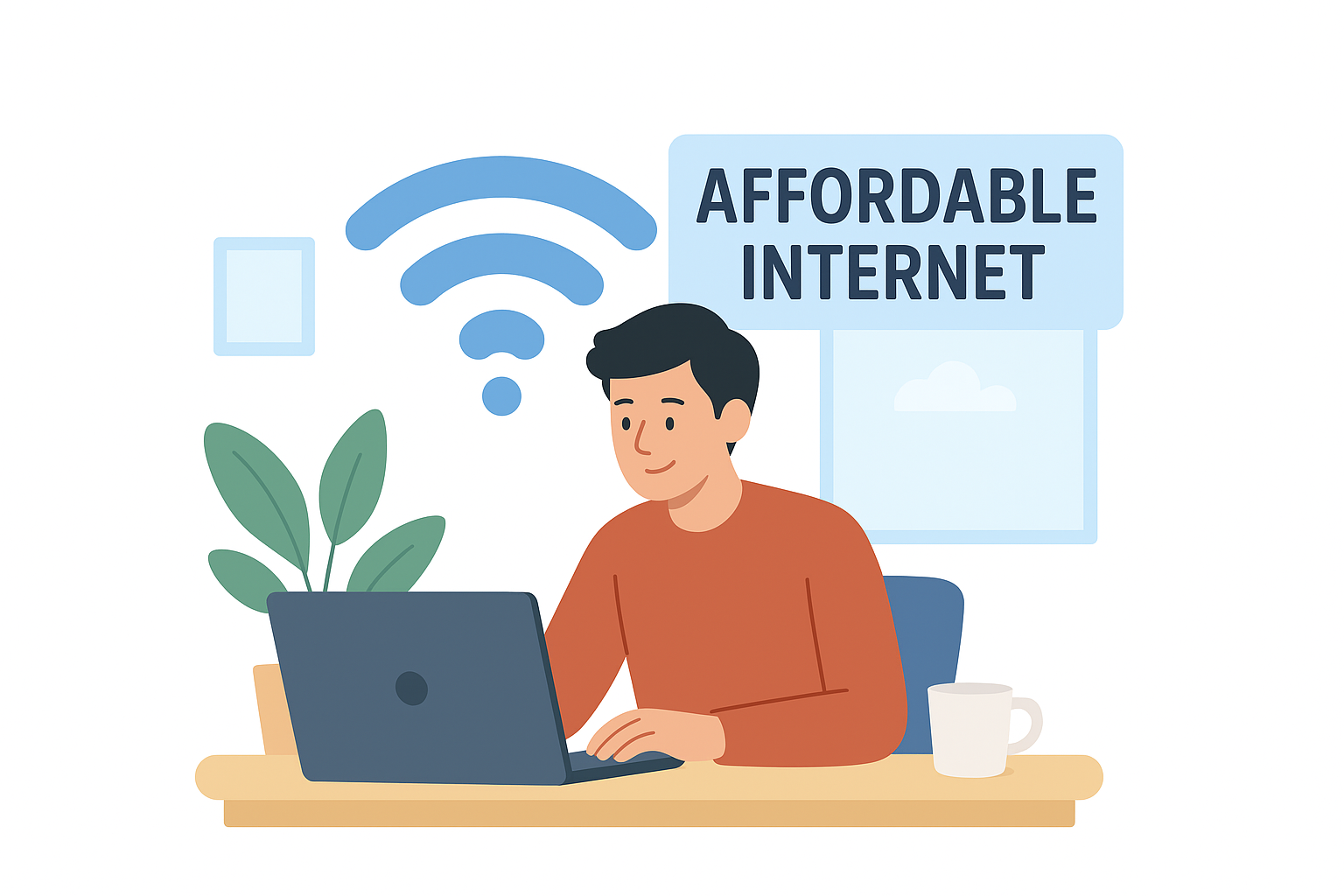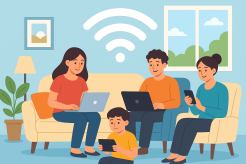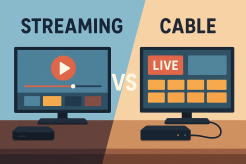Internet Subsidies: What They Cover and How to Benefit

If your internet bill feels like it’s climbing higher every month, you’re definitely not the only one noticing. With more of life happening online—school, work, healthcare, streaming, smart home gadgets—the internet has become as essential as electricity. The problem? Not everyone can comfortably afford it.
The good news is that several internet subsidy programs exist specifically to help households lower their monthly cost while still getting a solid connection. If you’re trying to cut your bill without sacrificing reliability, this guide walks you through the best options, who qualifies, and how to get started.
What Internet Subsidy Programs Actually Do
Internet subsidy programs are basically financial support systems that help cut the price of broadband service. Some are funded federally, others by states, and some come from non-profits or internet providers themselves.
These programs usually work in a couple of ways:
- They reduce your monthly bill
- They give discounts on equipment, like routers or modems
- They sometimes knock down installation fees
Depending on your situation, you might qualify for more than one program—which is where people can really save a noticeable amount.
Why Affordable Internet Matters More Than Ever
These days, not having stable internet puts you at a real disadvantage. Students need it for homework and virtual classes. Remote workers need it to clock in and get paid. Families use it for video visits with doctors. Even simple tasks—paying bills, job hunting, checking appointments—happen online now.
Affordable internet isn’t a luxury; it’s a baseline requirement. That’s why having access to programs that lower your costs can make such a big difference, especially if you’re managing a tight budget.
Federal Programs That Help You Get Cheap Internet
A couple of big federal programs are designed to help households bring down their internet bills.
Lifeline Program
The Lifeline program has been around for a long time and helps lower the cost of phone or internet service. If your income qualifies, or if you’re already enrolled in programs like SNAP, Medicaid, or SSI, you may be eligible.
The best part is that Lifeline works through many major ISPs, so you can apply the discount directly to your existing service.
Affordable Connectivity Program (ACP)
The Affordable Connectivity Program helps eligible households cover part of their monthly broadband cost. If you participate in programs like SNAP, WIC, or school lunch programs—or your household income meets the guidelines—you may qualify.
Some households stack ACP benefits with low-cost ISP plans, which can bring the price down even further.
State and Local Programs That Offer Extra Help
Federal programs get most of the attention, but certain states offer their own broadband discounts too. These can include:
- Monthly bill credits
- Cheaper installation
- Special low-cost plans through local ISPs
- Grants or rural coverage programs
Availability varies a lot depending on where you live. Your state’s public service commission or broadband office is usually the best place to check.
Non-Profit and Private Programs That Keep Costs Low
Outside of government support, several non-profits and major ISPs offer their own affordable plans. These are often easier to qualify for and come with minimal restrictions.
For example, Comcast and AT&T offer low-cost plans designed specifically for budget-conscious households. These can often be combined with federal benefits, which cuts the cost even more.
Who Actually Qualifies for Internet Subsidies
The exact criteria depend on the program, but most of them look for at least one of the following:
- You participate in SNAP, Medicaid, SSI, Section 8, or similar programs
- Your income is within 135–200% of Federal Poverty Guidelines
- A student in your home receives free or reduced school meals
- Someone in the household receives a Pell Grant
A lot of households don’t realize they qualify—so it’s worth checking even if you’re not sure.
Understanding Your Internet Options
If you’re shopping for cheap internet, it helps to know the difference between connection types. Not every technology works the same, and the one you choose affects speed, price, and consistency.
Fiber Internet
Fiber is the fastest and most reliable option. Many providers break down how this type of network works in their guides to fiber technology, which makes it easier to understand why it performs so well—especially in busy homes.
Cable Internet
Cable internet is widely available and offers solid speed for streaming, gaming, and remote work. Performance can dip slightly during high-traffic hours, but it’s still one of the most dependable everyday options.
DSL Internet
DSL doesn’t reach the speed of fiber or cable, but it’s steady and works well in rural or suburban areas where other options might be limited.
Satellite Internet
If you’re in a remote or underserved area, satellite may be the only option. Newer satellite tech has improved significantly, though latency can still be higher than wired connections.
How to Apply for Subsidy Programs
Applying is simpler than people expect. Here’s how to get started:
- Check your eligibility based on income or existing benefits.
- Gather documentation—this can be a benefits letter, income statement, or school meal program document.
- Apply online through the official program page.
- Contact your ISP to have the discount applied to your account.
Most ISPs are used to helping customers apply and can guide you through the process quickly.
How to Pick the Right Affordable Internet Plan
Not all cheap plans are equal. When comparing options, think about:
- Speed: Enough for video calls, streaming, browsing, and schoolwork.
- Data limits: Make sure you won’t get hit with overage fees.
- Extra fees: Installation, equipment rental, activation charges.
- Customer support: Some low-cost plans differ in service quality.
Getting the cheapest plan doesn’t always mean you’re getting the best deal long-term.
Cheap Internet Doesn’t Have to Mean Slow or Unreliable
A lot of people assume “cheap” equals “bad,” but that’s not always the case. In fact, research and comparisons of cheap internet quality show that many budget plans still deliver enough speed for work, school, and entertainment.
More People Are Looking for Low-Cost Internet Than Ever
With the cost of living going up, more customers are hunting for affordable broadband. Providers are responding by offering better introductory plans, discounts, and budget-friendly bundles. Market studies on low-cost internet deals show that the demand keeps rising every year.
Affordable Internet Works for Smart Homes Too
You don’t need an expensive plan to run a smart home. Many connected devices—like video doorbells, thermostats, or smart lights—perform perfectly well on budget-friendly broadband. Guides that break down smart home connectivity, like this look at smart home internet, show that even low-cost plans can handle these devices smoothly.
Conclusion
Getting reliable internet doesn’t have to drain your budget. With the right subsidy program and a little comparison shopping, most households can find a plan that’s both affordable and dependable. Whether you’re working from home, helping your kids with online school, or just trying to cut expenses, these programs can be a game changer.
Related Posts

Wed, Nov 26, 2025 4:22 AM
Internet BundlesWhy Upload Speed Matters: Choosing the Right Internet Plan
Discover why upload speed is just as important as download speed. Learn how to pick the right internet plan for streaming, video calls, and online gaming.

Wed, Nov 26, 2025 2:37 AM
Internet BundlesAffordable Internet Plans: Your Complete FAQ Guide
Discover affordable internet plans for students, low-income households, and families. Learn tips to save, available providers, and assistance programs like Lifeline.

Tue, Nov 25, 2025 10:49 AM
cheap internet offersBest Internet Providers Today: Finding the Right Speed, Value, and Reliability
Discover the best internet providers for speed, value, and reliability. Learn how to choose the right ISP based on usage, location, and connection type in this in-depth guide.

Mon, Nov 24, 2025 9:38 PM
cable dealStreaming vs. Cable: Which TV Service Truly Delivers the Better Experience?
Explore the complete comparison of streaming vs cable TV. Learn the pros, cons, costs, and performance differences to decide which service fits your lifestyle.

Mon, Nov 24, 2025 5:05 PM
cheap internet plansCost of Internet in a New Home: What Every Mover Should Know
Discover the real cost of internet in a new home, including hidden fees, rural options, and budget-friendly plans for families.